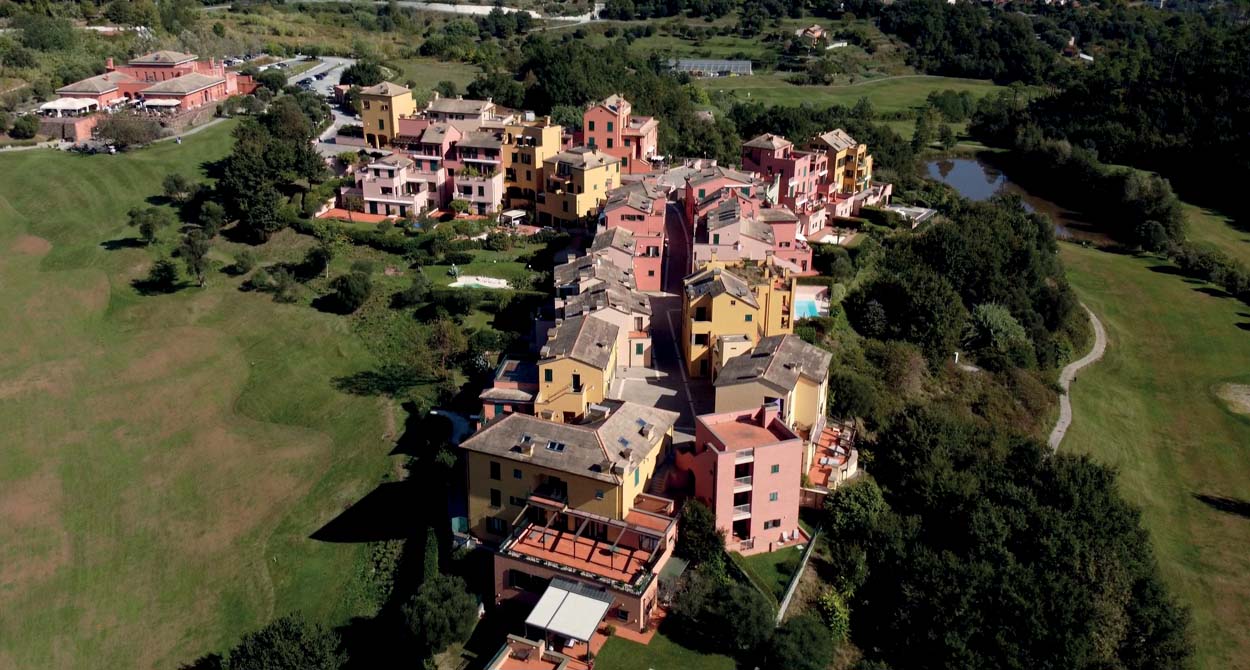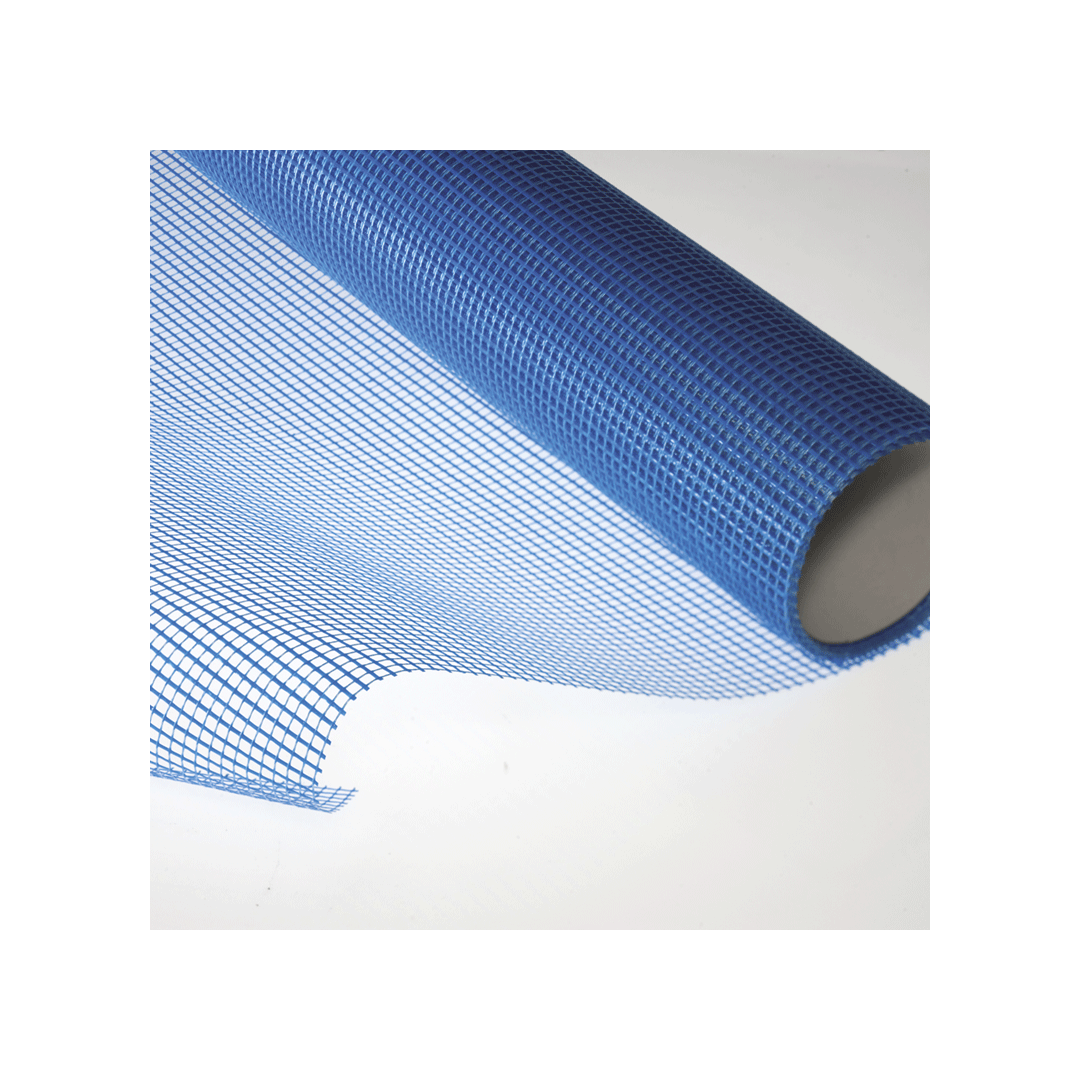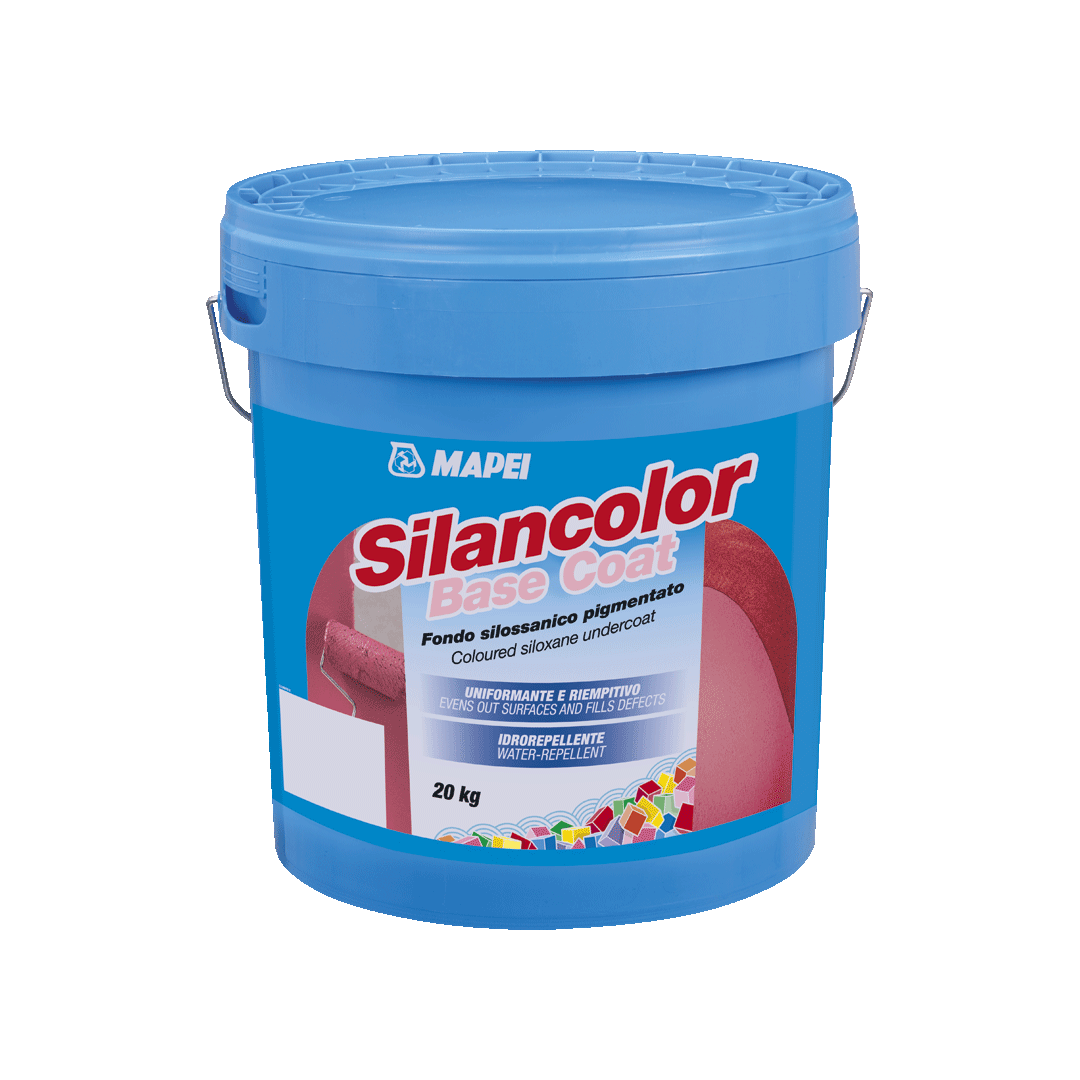
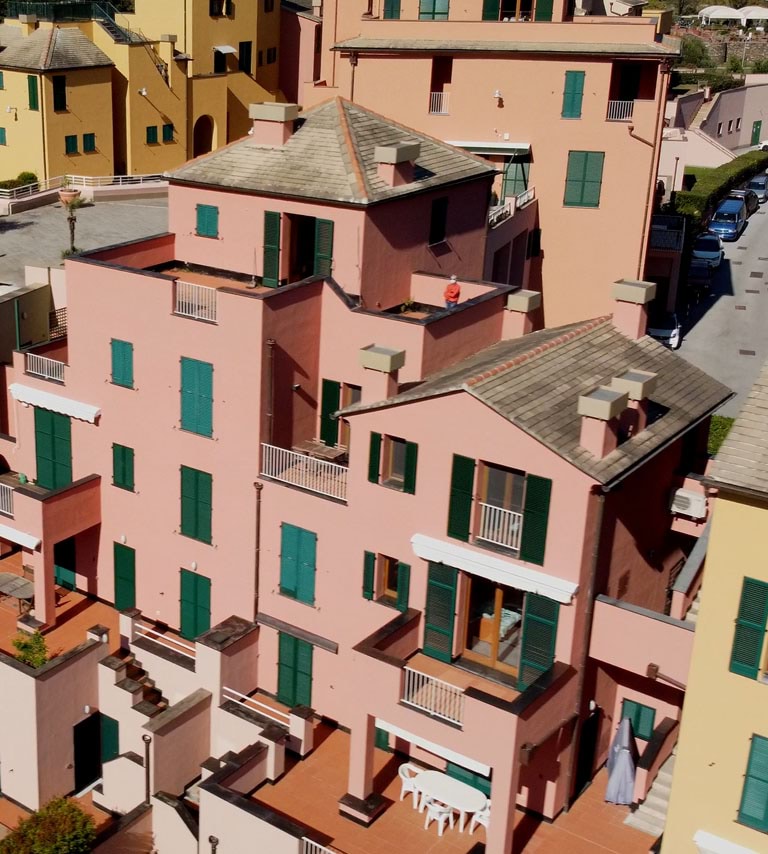
Sant'Anna residential complex
Reinforced skim coat and siloxane coatings for the façades of a ligurian village that recall traditional architectural structures and colours
Built in 2005, the Sant’Anna residential complex is located in the village of Lerca in the municipality of Cogoleto, a town on the Ligurian coast near Genoa (Northern Italy). The structure was designed by the architect Marco Zanuso and harks back to the traditional villages of Liguria, creating harmony with the surrounding environment by selecting elements typical of the lines and colours of the local architecture. The use of traditional materials, such as slate for the roofs and opus signum (lime and brick dust) plaster, harmonises the living spaces with their surroundings. The load-bearing structures of the buildings are mainly made of reinforced concrete while the walls are brick-built. Renovation work commenced on the front of the buildings in 2019, which had begun to show signs of degradation thanks also to the lack of an adequate protective coating on the surfaces. The renovation work included a complete overhaul of the façades.
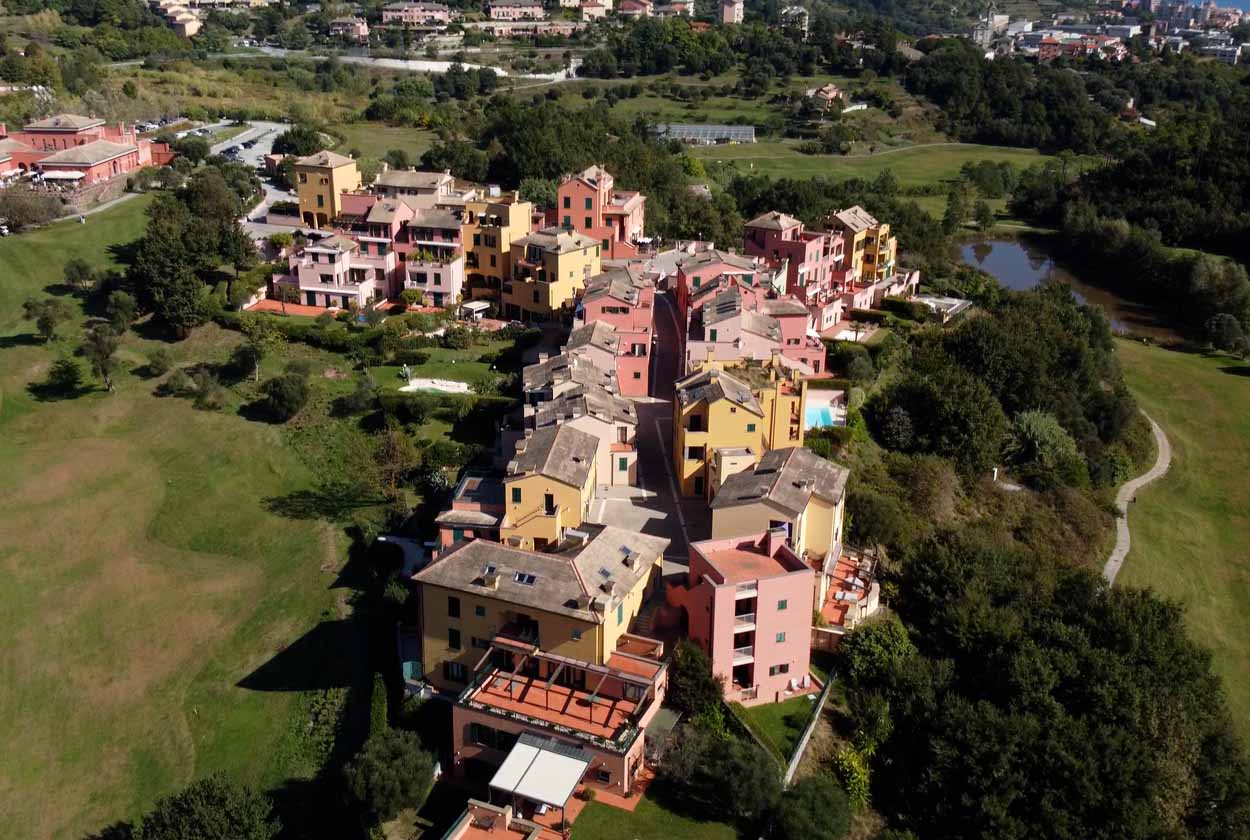
Substrate preparation
The first checks were carried out on the waterproofing properties of all the elements subject to infiltrations of water, as well as of the pavements and walls in contact with the ground. The extent of cracking and degradation of the plaster was also carefully checked. All the features and elements passing through the masonry were also inspected to check whether they were sealed correctly, such as the downpipe drains, external awnings and the support feet for the railings: all critical points that can lead to infiltrations of water and premature degradation of substrates.
Restoring the façades
It was recommended to treat the surfaces of the buildings deteriorated by mould and algae with SILANCOLOR CLEANER PLUS hygienising treatment in watery solution, an anti-alga and anti-mould product which was applied several times to allow it to penetrate as deep as possible and left to react for at least 24 hours. Any areas of plaster that looked to be degraded or were found to be poorly bonded to the substrate were removed mechanically. The next step was to clean the substrate to remove any dust and dirt that could affect adhesion of the products to be applied later. After the restoration of the removed portions of plasters and the levelling of the surfaces, the substrates were allowed to completely cure before applying a skim coat of MAPETHERM AR1 LIGHT one-component, lightweight cementitious mortar. This mortar, which has a thixotropic consistency and high mechanical resistance, may be applied on vertical surfaces without slumping and adheres perfectly to all types of insulating panels if used as part of an external thermal insulating system. In this case, MAPETHERM AR1 LIGHT was used to create a reinforced skim coat. After applying an even layer of mortar on the surfaces (around 22,000 m2), MAPENET 150 alkali-resistant glass fibre mesh was embedded in the mortar while still fresh, with overlaps of at least 10 cm between the adjacent sheets of mesh. After around 12-24 hours a second skim coat layer was applied to form a compact, even surface suitable for the application of the final coating.
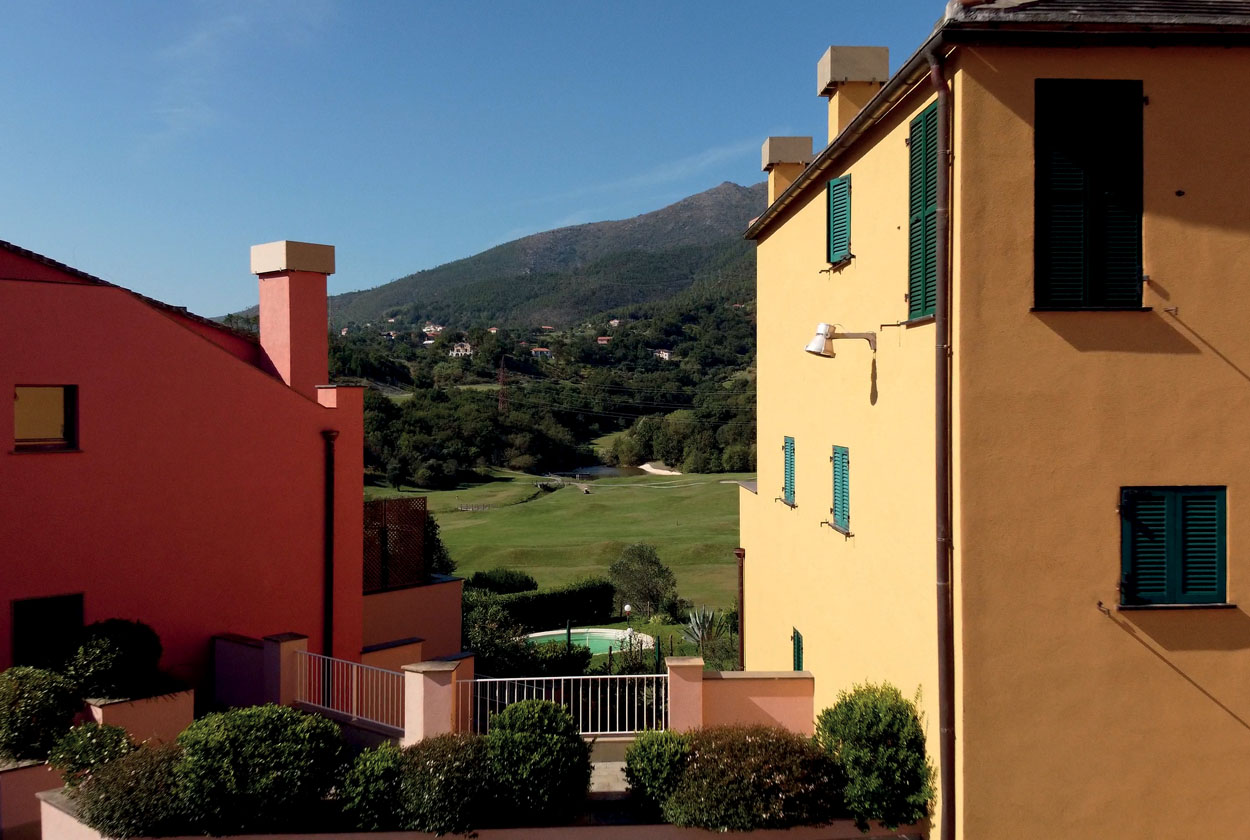
Coloured protective coatings
Once the substrates had fully cured, the SILANCOLOR system was recommended to finish off the surfaces. After applying SILANCOLOR BASE COAT water-repellent, siloxane undercoat and base filler to even out the surface, work was completed by using SILANCOLOR TONACHINO PLUS, a water-repellent, mould and algae resistant siloxane render. Available in various grain sizes, it combines the benefits of mineral coatings, such as water resistance and breathability, with those of synthetic coatings, such as an even colour, excellent bond to old paintwork and an extensive choice of colour shades, very important in interventions such as the one described in this article. Unlike conventional synthetic coating products, it does not create an impermeable layer but forms a "micro-perforated" film with such a narrow mesh that it does not allow water to enter but allows water vapour to pass through. This helps guaranteeing the durability of the intervention.





